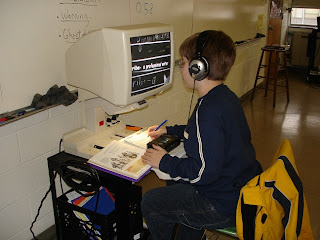Peer Editing
Peer editing is something that students do not do very much of in the world today. Peer editing can be a very useful tool. When you first think about peer editing, you think that it is a bad thing. It is not a bad thing if it is done the correct and “positive” way! After viewing "Paige’s blog assignment",watching the videos,"What is Peer Editing?" and "Writing Peer Review Top 10 Mistakes", and viewing the slides, "Peer Edit With Perfection Tutorial", peer editing is broken down into three simple instructions.
These instructions include: Complimenting, Suggesting, and Correcting. First, there is complimenting. When peer editing, you should always start out by complimenting the other person’s work. Second, there is suggesting. This means to provide the person that you are peer editing with useful ideas and information. Finally, there is correcting. This is the instruction that some people have a hard time doing, because we do not want to hurt others’ feelings. By correcting other people’s work, we simply, in a positive way, tell the person their mistakes. It is as simple as that. The key to peer editing is to always “stay positive”!
Technology in Special Education
After watching the video, "Technology in Special Education", Lacy Cook is obviously is an excellent teacher. In her video she demonstrates not only how technology has changed the way she teaches, but it also shows how much her students have gained. We live in a world where students’ lives are centered on technology! As teachers why would we not use that to our advantage? I can remember when I was in high school most special needs students really did nothing. They helped the janitor clean classrooms. Today this has all changed. Computers have allowed for us to see really just how much special need students can actually learn.
Using technology to help special needs students is a no brainer. I do not think there are really words to truly show the impact that technology has made on these very special students. Special needs students are very special to my heart. A very special little boy named Hayden actually first inspired me to be a teacher. I have first hand seen how technology has changed his life. He can now do things even his parents never thought he would be able to do. He always has the biggest smile because he knows his computer helps him.
My sister teaches at a high school in Mississippi. She has a classroom full of computers. She teaches four inclusion classes, and many of her special need students do better work with the new technology than the regular education students. All schools should make sure that all the equipment necessary is available to give special need students every opportunity to succeed.
Apple Education App
After watching the video, "How the iPad Works with Academics for Autism", and exploring the website, "Apple in Education", I found the “I speak word” app to be very interesting. This app is designed to help a student learn the sound of a letter. I think that this app would be very beneficial to special need student who needs help with speech. This app not only will help a student speech, but it does so in a way that will motivate the student to want to learn more. After all our job as teachers is to motivate students to learn more than they already know.
Harness Your Students' Digital Smarts
After watching the video, "Harness Your Students’ Digital Smarts" by Vicki Davis, I think it is incredible that Vicki Davis uses this much technology in her classroom. Allowing her students to develop avatars, wiki’s, and communicate with students not only in the US, but all around the world is extraordinary. Even though she teaches in a very small school she uses any resource she can to help reach her students. Her students are using technology that I am just now learning about. It is wonderful to see students so interested in education.
I think it is a shame that the trend in education is leaning away from this type of education. Our entire world is centered on technology. Students literally have access to the types of technology Mrs. Davis uses at their finger types. I hope that when I start teaching in my classroom that I can motivate my students as much as this class has motivated Mrs. Davis’s students. Instead of trying to teach a “common core” maybe we should let the students show us their creativity and uniqueness by allowing all students to work in an environment like Mrs. Davis’s classroom.




Jamie,
ReplyDeleteThe way that you incorporate the clickable links was very logical and seemed to be incorporated into the text itself as part of the writing, which is outstanding! You are mastering HTML :)
You did a great job summarizing and adding some commentary to the post. Always be sure to do more than summarize, such as: making connections between the different elements of the blog post/other posts, discussing how a particular video/post relates to the kind of classroom environment you would like to establish, giving examples of how you would use a particular piece of technology, what you would like to change about the way we educate youth in America, etc. Be sure to use ingenuity and think of new things to bring to the post that are relevant to the type of teacher that you would like to be and emulate.
Also, be sure to include alt and title modifiers with all of your images!
Keep up the good work! Good luck :)
Carly
"When you first think about peer editing, you think that it is a bad thing." Why is "bad thing" the first thing you think of when you think of "peer editing"?
ReplyDelete"...that I am just know learning about..." now?
"... that the trend in education to leaning away from this type of education." Something is missing from this sentence. What is it?
Proofread!